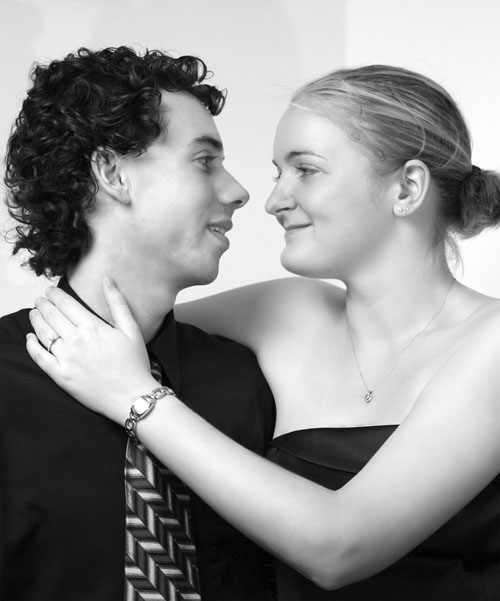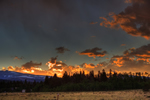Engagement Photos
I’ve been gone for awhile thanks to having one heck of a busy summer. I’m sure you can guess from the photo to the left, or perhaps from the post title . . . but one of the things keeping me busy was getting engaged ![]() And considering that I was single at the beginning of the summer, a lot has happened in the past few months! (a lot of good stuff I might add)
And considering that I was single at the beginning of the summer, a lot has happened in the past few months! (a lot of good stuff I might add)
Don’t worry, there are plenty of photography relevant stories from the summer. But you’ll have to forgive me if I’m still feeling rather proud of the fact that there is now a beautiful young chemical engineer who wants to spend the rest of her life with me ![]() Ok, before I make anyone sick . . . yes, I took the photo of Linda’s ring to the left. And I learned a lot of valuable lessons while trying to pull it off.
Ok, before I make anyone sick . . . yes, I took the photo of Linda’s ring to the left. And I learned a lot of valuable lessons while trying to pull it off.
I captured that photo on my trusty Canon 40D with my 100mm macro lens. The ring is sitting in it’s black leather box, which lead to lesson number 1: when photographing a ring, pull it as far out of the box as you can while still keeping it upright. I took a bunch of photos with the ring about halfway down in the little slot that holds it, and they generally look like crap. Count on losing about 50% of the circumference of the ring that’s still showing because it will be in shadow . . . which means I got a lot of silly photos of 1/4 of the engagement ring. The ring box does make a really nice backdrop since it’s dark, provides both a base and a backdrop, and casts a shadow that lets the band gradually fade out of view . . . just be careful that the nice shadow doesn’t swallow your ring.
For lighting, I used a bare bulb off to the camera left. I knew I was working with my macro lens which limits light intake, so I went with a really hefty bulb quite close to the ring – funny when you think about it, the light source was several times larger than the ring, even from the camera’s perspective. You have to be careful with lighting like this, as it’s quite easy to end up with significant lens flare. Canon lenses are generally exceptional at reducing lens flare thanks to little diffraction grooves that line the inside of the barrel . . . but even the best lens can succumb in situations like this. Make sure everything around your scene is draped in black to minimize stray reflections.
Speaking of stray reflections, we’re photographing metal and diamonds. I assumed that a lighting setup similar to the way you would light metal and glass would work pretty well. Namely, you want to minimize reflections everywhere except the very edge of the subject, which means positioning your light so that only the edge of the subject is lit in such a way that edge reflections are directed into the camera (using the rule that the incoming angle of light is equal to the reflected angle of light). This all worked fine in theory, but as you can see from the photo, diamonds are much more complex than most pieces of glass. And their legendary propensity for reflecting light wreaks havoc on a photographic setup. Due to the numerous facets as well as the incredible refractivity of diamond, there is almost no way to completely control reflected light. Of course, if I did a perfect job of it, the diamonds probably would have looked like glass . . . which I suppose defeats the purpose. Anyway, I think the little rainbows in the photo work quite well . . . though I’m still upset that I couldn’t do a better job of creating distinct edges.
Ok, last lesson I learned and a fun photo. I tried capturing some HDR series with my macro lens. This did not work out so well. In spite of using a good tripod and a remote trigger, I just couldn’t keep the focus coherent between multiple exposures. I’m not entirely sure why this happened, especially since I had the lens set to manual focus. But something about the extreme differences in visible objects in the scene as the exposure changed made it impossible to line up the frames and get a decent image. Basically the dynamic range in the scene was too big even for a high dynamic range image. I guess that makes a significant statement about the brilliance of Linda’s diamond ![]()
I think maybe if I had stepped the HDR in smaller increments and taken more exposures I could have gotten something to work with. But then of course I would have risked shifting the camera as I adjusted settings in the menu. So I’m at a bit of a loss for a practical solution. I mean literally the dark exposure developed all the texture of the leather box, but there was no ring in the photo; the middle exposure developed the shape of the ring, but there was no box; and the light exposure developed a beautiful reflected rainbow from the diamonds, but you couldn’t even make out the edges of the ring.
Perhaps this is why I’m always disappointed by the photos of diamonds in catalogs though ![]() And perhaps why I never thought I liked diamonds. I have to admit though, I really like the look of a diamond on Linda’s finger . . . I may have to buy her more. You know, to practice my photography skills
And perhaps why I never thought I liked diamonds. I have to admit though, I really like the look of a diamond on Linda’s finger . . . I may have to buy her more. You know, to practice my photography skills ![]()





Leave a Reply